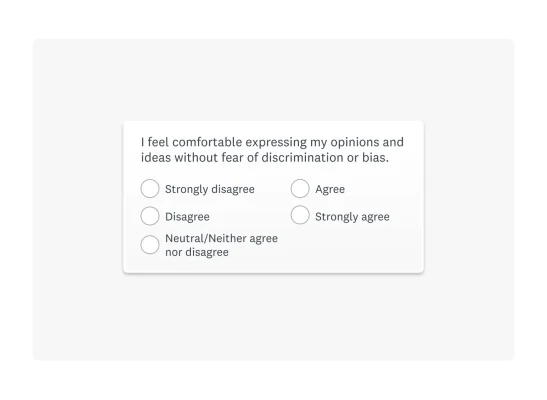How to leverage corporate diversity for business resilience
Create an innovative, inclusive and productive work environment with corporate diversity.

Today’s modern workforce appreciates corporate diversity now more than ever. Glassdoor reports that most job seekers and employees (76%) consider corporate diversity important when evaluating job offers from different companies.
Understanding corporate diversity is vital to creating an inclusive, innovative and productive work environment. This guide defines corporate diversity, explains its relevance to modern businesses and provides insight into implementing a corporate diversity programme.
What is corporate diversity?
Corporate diversity is when an organisation values differences among its workforce and intentionally hires employees with diverse backgrounds.
Businesses create effective and innovative teams by hiring a diverse workforce. Research from McKinsey & Company indicates that diverse organisations are 33-35% more likely to outperform their industry benchmarks in profitability.
Diversity is often used interchangeably with inclusion, but they are different. Corporate diversity concerns the representation of different groups within a workforce, while inclusion refers to how diverse employees are treated and valued in a workplace.
Diversity, equity and inclusion (DEI) initiatives focus on building a welcoming work culture where all employees feel seen. DEI in the workplace creates opportunities for employees of various backgrounds to succeed.
How people feel about the Costco DEI policy: 25+ stats and 10 tips
Learn if a company's stance on DEI influences its ability to attract talent or maintain consumer loyalty.
Why is corporate diversity important?
Corporate diversity is critical to an organisation’s recruitment and hiring strategy. Its benefits range from increased creativity to improved decision-making. Keep reading for insights on the importance of diversity and inclusion in the workplace.
Improved innovation and creativity
When an organisation intentionally hires professionals from different backgrounds, it reaps the benefits of skill diversity. Employees at a diverse company bring different skill sets and fresh perspectives to the table. Teams of employees with various life experiences are often more creative and innovative.
Including cognitively diverse employees helps prevent “groupthink” by utilising various ways of thinking. A team with varied methods of thought and perspectives generates more innovative ideas. An inclusive environment valuing unique perspectives supports new ideas, whether due to education, culture, gender identity or socioeconomic status.
Enhanced employee engagement and retention
In addition to fostering better innovation, organisations can anticipate greater employee engagement.
Employee engagement, especially among millennials, is higher in inclusive workplaces. Higher levels of engagement lead to improved team performance. Employees who feel valued and accepted by their organisation are more inclined to be engaged in their roles.
Additionally, corporate diversity reduces turnover. Companies that prioritise workplace diversity experience a 68.3% boost in employee retention, which could significantly improve their bottom line. Given the high cost of employee turnover, retention efforts are essential.
Stronger brand reputation
Businesses should prioritise corporate diversity to enhance their brand reputation. Brands can significantly improve their image by demonstrating their commitment to diversity, equity and inclusion (DEI).
A strong reputation is essential in attracting and hiring talent. As previously noted, studies indicate that most job seekers consider an organisation’s DEI initiatives when applying for positions.
Additionally, a strong brand reputation is critical to fostering customer loyalty. Facebook found that 59% of consumers prefer buying from brands committed to diversity and inclusion. Building a brand reputation for being culturally competent and diverse helps employee and customer satisfaction.
Increased adaptability and resilience
Obstacles may occasionally arise, and teams must adapt their strategies. A diverse workforce composed of members with unique perspectives can better adapt to changes.
Varying viewpoints encourage creative problem-solving in a diverse work environment. This adaptability enables businesses to stay competitive in the market.
Another positive side effect of a company culture that values diverse perspectives is increased resilience. When teams embrace change and adapt to overcome problems, they build resilience.
Resilience helps teams recover from setbacks and move forward even in uncertain times. Leaders can cultivate resilience by celebrating small wins, promoting continuous learning and fostering a safe and comfortable environment.
Improved decision-making
Another reason corporate diversity matters to modern businesses is its impact on decision-making.
Research from Cloverpop shows that highly diverse teams make better decisions 87% of the time compared to less diverse teams. Why is this? This is likely because diverse teams bring a variety of unique perspectives. Employees with different educational backgrounds, cultural experiences, gender identities and skill sets bring fresh ideas.
Employees at companies with cultures based on inclusion are empowered to speak up and share their perspectives. Teams that consider everyone’s thoughts and ideas can develop innovative solutions to problems. Improved decision-making supports businesses in meeting organisational goals.
What culture changes should you make to succeed in corporate diversity and inclusion?

Now that you understand corporate diversity, let’s discuss the essential changes that organisations must implement to embrace DEI. There are several recommended culture changes organisations should consider.
Leadership’s role
To effectively advance workplace diversity initiatives, an organisation must secure leadership support. Leadership teams typically authorise these initiatives and allocate necessary funding or resources.
Sustainable change stems from a persistent commitment to diversity and inclusion. Leadership teams must invest time and resources in fostering a workplace that embraces all employees. Diversity in the corporate context influences various aspects of a business, and leaders should consider it in their decision-making processes.
Commitment to transparent communication
Another key to the success of diversity and inclusion efforts is transparent communication. Communication should be clear, honest and respectful to build trust among team members. Ensure all employees feel valued and are given the chance to voice their opinions at work.
Leaders should foster transparent communication by setting clear expectations, asking for feedback and modelling openness in their interactions. A commitment to transparency helps minimise misunderstandings and build a supportive environment.
Transparent communication creates a work culture where diversity and inclusion thrive, driving innovation and business success.
Employee education and training programmes
HR and leadership teams can support corporate diversity through employee education. Education is a powerful tool in creating more diverse, equitable and inclusive work environments. Implementing structured training programmes gives employees the education needed to encourage inclusive behaviours.
Consider hosting mandatory training programmes on unconscious bias and cultural competency. To achieve the best results, assess training needs, get leadership support, work with a facilitator and make training interactive.
Be sure to measure the effectiveness of your training programme by regularly gathering employee feedback.
Inclusive policies and practices
Organisations may need to change their policies and practices to support diversity and inclusion.
For example, companies should have inclusive policies that provide equal opportunities for employee career growth. Policies should also include accommodations for diverse employee needs, such as flexible work arrangements, accessibility and religious holiday observations.
Additionally, organisations can implement anti-harassment and anti-discrimination policies. Strictly enforcing such policies helps lessen incidents and support employee satisfaction. All employees should feel respected by their colleagues.
Promoting diverse hiring and promotion practices
HR and company leaders should also assess their hiring practices and consider ways to promote diversity. Diversity recruiting practices are essential to building a strong workforce, and companies that focus on overcoming bias in hiring are one step closer to corporate diversity.
Determine company goals for diversity recruiting, set action steps and identify metrics to monitor progress. To take action, find the areas that need the most attention. For example, you may see that your IT department lacks female representation. You may also have a goal of expanding racial diversity in leadership roles.
Promotion practices are another area to evaluate. Business leaders should use standardised promotion criteria to minimise bias. Be sure to clearly outline the requirements for promotion opportunities to give all employees a chance to pursue advancement.
Creating safe spaces for open dialogue
Employees should feel comfortable expressing their concerns and opinions at work. A diverse and inclusive culture encourages open dialogue without judgment.
Companies may implement Employee Resource Groups (ERGs) to create safe spaces for open dialogue. ERGs are designed to foster a sense of belonging among employees, ensure underrepresented voices are heard in the workplace and promote organisational change.
Encouraging diverse teams and cross-functional collaboration
To encourage diverse teams, focus on recruiting employees from a wide range of backgrounds. This may involve rethinking hiring strategies and incorporating blind hiring practices. Structured interviews can also be used to reduce bias in hiring and promote diversity.
Once diverse teams are in place, foster cross-functional collaboration to improve business outcomes. Companies can drive success by encouraging teams to work together when making decisions. Cross-functional collaboration can help teams produce innovative ideas that subvert expectations.
Implementing zero-tolerance policies for discrimination and bias
Companies committed to corporate diversity should incorporate zero-tolerance policies for discrimination. Similar to harassment policies, these zero-tolerance support a healthier workplace where all employees are respected. Clearly outline acceptable and unacceptable behaviours and the consequences of an employee’s actions. Put these policies into your organisation’s code of conduct and ensure you educate current and new employees.
HR teams must swiftly investigate employee complaints and follow the policies’ guidelines for violations, balance transparency and confidentiality when handling cases to ensure employee satisfaction.
Continuous feedback and adaptation of diversity initiatives

Corporate diversity is not a set-it-and-forget-it initiative. It requires continuous adaptation and is supported by employee feedback.
Surveys are an effective means of gathering employee feedback on diversity and inclusion initiatives. HR teams should conduct reviews and collect feedback regularly to evaluate DEI efforts.
This feedback can be used to identify areas for improvement and carry out necessary adjustments. Gauge employees' feelings about your organisation’s corporate diversity efforts to continuously improve your programme.
Related reading: Diversity and inclusion survey templates
Why corporate diversity programmes fail
Let’s face it. Teams may face challenges such as unconscious bias, lack of leadership support and poor communication. These challenges can derail a diversity and inclusion programme if teams aren’t prepared.
Unconscious bias
Some organisations underestimate the impact of unconscious bias on hiring, promotions and workplace interactions. Unconscious bias can quickly impact the rate at which companies reach their DEI goals.
Organisations should implement mandatory unconscious bias training for all employees and leadership. This training should provide employees with the knowledge and understanding of recognising unconscious bias.
Lack of leadership support
Frequently, HR teams lack enough support from leadership to change workplace culture effectively. Teams should rope leadership in with a business case for why corporate diversity is essential and how it will benefit the company. For example, corporate diversity reduces absenteeism and attrition. Share concrete ways diversity promotes a happier, healthier and more profitable organisation.
Poor communication
Another obstacle is that teams may need better communication. When DEI initiatives are not actively discussed, they can fall by the wayside.
Teams must ensure clear and transparent communication of the steps to promote diversity. Additionally, tailor your communication strategies to reach diverse audiences. This can mean utilising inclusive language, translating materials or using multiple communication channels to relay messages.
Why and how to measure corporate diversity
HR professionals should consistently measure diversity to track progress toward company goals and pinpoint areas for improvement. Teams can identify which tactics are effective in fostering an inclusive work environment.
Companies should track metrics such as:
- Demographic-specific retention rates
- Employee engagement
- Hiring breakdowns
- Compensation or promotion percentages
- Employee satisfaction
Monitoring these metrics and more helps foster accountability and continuous improvement. Some key data sources include:
- Surveys
- Demographic data analysis
- Hiring rates
Regularly evaluate your organisation’s corporate diversity to adapt your strategies as diversity goals evolve.
Improve corporate diversity at your workplace
Organisations should take a comprehensive approach to corporate diversity to facilitate lasting change. With leadership buy-in and continuous feedback, companies can create safe and inclusive workplace cultures.
Committing to corporate diversity means dedicating time and resources to an ongoing journey of improvement and adaptability. By collecting feedback from employees and stakeholders, teams can adjust their strategies to improve results.
SurveyMonkey helps companies start or refine their diversity and inclusion strategies. Promote change and DEI success with continuous feedback via online surveys. Find out more or sign up for free to get started.
Discover more resources

Attract, engage and retain top talent with data-driven insights
Create HR surveys with SurveyMonkey to gather feedback, boost engagement and improve workplace culture. Streamline HR processes with customisable templates.

Help employees thrive with learning programmes that drive real growth
Measure L&D impact with powerful survey software. Gather feedback, track growth and improve employee development with insights that support long-term success.

Inclusion and Belonging Survey Software
Foster a more inclusive workplace with survey software. Measure belonging, gather honest feedback and build a culture where every voice matters.

Application Form Template
Efficiently gather, store and review applications with our comprehensive application form template.